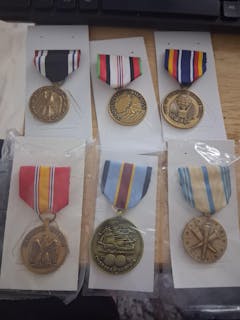The History of the M-65 Field Jacket

Shop our M-65's now
Named, as all later models were, after the year it was first produced, which functioned as part of the World War II combat uniform in the early years of the war. The jacket was also unofficially referred to as the O.D. Cotton Field Jacket, after the material and olive drab no. 2 shade it was produced in. As the first military field coat, the M-41 was based on the design of a typical civilian windbreaker, a type of outerwear that’s meant to protect the wearer against wind chill and light rain; however, the M-41 included more insulating features such as a cotton poplin outer shell and wool flannel lining, button closures at the neck and cuffs, and a button-down storm flap over the front zipper closure.

The M-41 Field Jacket

The M-51 Field Jacket

The M-65 Field Jacket


The Woodland Camo and Desert Camo M-65 Field Jackets

M-65 Jacket decorated with many underground bands from the '90s

Icon Lt. John Kerry



Whether on the catwalks of high fashion maestros like Marc Jacobs or Saint Laurent, in the lookbooks from global streetwear powerhouses like Carhartt WIP or Supreme or as pick from the racks of the local army surplus store – the M-65 Field Jacket is made to last and here to stay, even more than fifty years after being first commissioned by the military.
CamoLots (previously known as Uncle Sams, or armynavydeals) has helped play a huge role in the fashion world over the years. Having a retail store in the heart of the Iconic "West Village" in NYC for over 20 years, meant even designers such as Ralph Lauren, Marc Jacob, and Dust of Gods, bought our original products for their Fashion shows, and stores.
This in turn lead to us being able to sell wholesale items to Urban Outfitters in 2010!
That's right! All the military surplus you see sold there even today - Came from US!
Of course, we have always been here for designers and artists throughout the years and all of them take our great stuff and make it even greater by making it original! Not to mention the music videos, to broadway shows to movies!
We truly owe it to all of them - for making Military Surplus we know it as today!
We still carry the BIGGEST selection of Field Coats, Including the M65, making it easy for you to to find that perfect jacket.
















